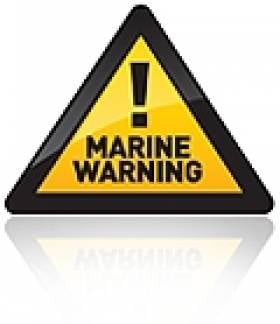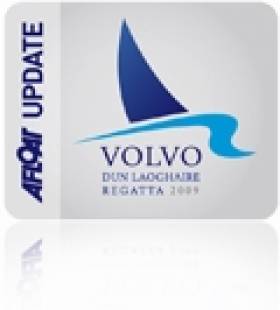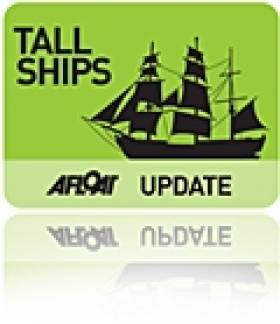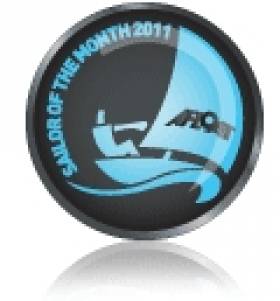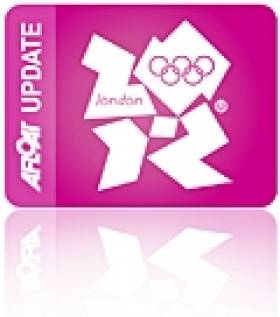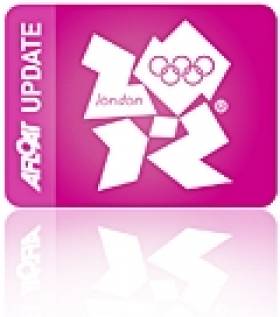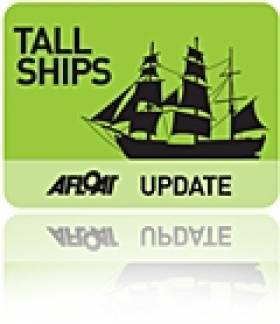Displaying items by tag: Sail
Coast Guard Issues Advice for the August Bank Holiday
The following are general safety tips and advice to help enjoy the water and coastal activities in your area this weekend.
Swimming
Only swim at beaches and waterways that have Lifeguards on duty and pay attention to the safety flags. Ask the Lifeguard for advice about safety and water conditions and adhere to their instructions. Avoid using inflatable toys, such as lilos and rubber rings, on the water.
Cliff Walking
There is safety in numbers never be alone if possible. Let somebody know when & where you are going and what time you will be back . Stay well away from the cliff edge, both top and bottom. Don't attempt to rescue people or pets if they fall over the edge. If assistance is required dial 112 and ask for Coast Guard.
Water Sports and Coastal Activities
Before going to sea check local weather conditions and tides in the area. Wear correctly maintained and fitting lifejackets that are suitable for the activity. Lifejackets are of no use unless they are worn. Ensure your craft is fit for purpose.
Do not overload the craft. If you are in difficulty or see someone in difficulty and requiring assistance dial 999/112 and ask for Coast Guard.
Swim, walk, boat, surf, sail, canoe and enjoy our cliffs, beaches, seas, and waterways this weekend - but do it safely.
The intrepid travellers have come from such places as Limerick and Liverpool. Within the class, Ralph Roberts is a representative of the more adventurous. In the company of a most amazing crewman, Ralph sailed his dinghy from Liverpool to Dun Laoghaire, though he did break the journey with a short respite in Hollyhead.
During the trip, the highfield lever, a mechanism which controls the rig and the ability to sail to windward kept slipping which must have accounted for a considerable portion of his 23 hour journey time. Apparently the troublesome nature of this piece of kit on the boat is on par for the vintage and value of the boat in question. His fellow Wayfarer comrades, on hearing of his difficulties emptied their tool boxes and kindly supplied him with replacement parts. Upon receiving such bounty, he was heard to remark, 'For the return journey, we can now sail around Ireland.'
Apparently, a non stop circumnavigation of the island of Ireland is not beyond the boat's resources as one or other of the helm and crew can be ensconced in sleeping bags and be securely tied-in under the thwart. Indeed this, according to one, is how Ralph planned his accomodation for this Regatta.
This particular boat's name is 'Foxy Lady'. She can be seen swinging on a mooring on the East Bight area of the harbour. She didn't sail today. Perhaps the light airs and the relative short race-course are not enough of a challenge for her? Or maybe her crew are distracted in their perparations for an entry in the Vendee Globe. Well, it stands to reason doesn't it? The Barcelona Double Handed Round the World Race has already started and the next Round Ireland Race is not 'till next year.
The Vendee, being a single-handed only race, should release Ralph's Most Amazing Crew (M.A.C.) for more heroic duties on other boats. Should anyone with to avail of M.A.C's services, we will of course forward your application if it is suitably supported with a description of a similar Ralphesque type adventure.
The Celtic Mist, the new flagship of the Irish Whale and Dolphin Group, was berthed in Waterford city for the Tall Ships weekend writes Shay Fennelly. Gifted to the IWDG in May 2011 by the family of a former Irish Prime Minister, Charles Haughey, who declared Irish waters a whale and dolphin sanctuary in 1991.
Celtic Mist left Waterford on Sunday morning in glorious sunshine on passage down the River Suir for the Tall Ships Parade of Sail off Dunmore East watched by thousands of people from the river bank at Passage east, Duncannon and Dunmore East.
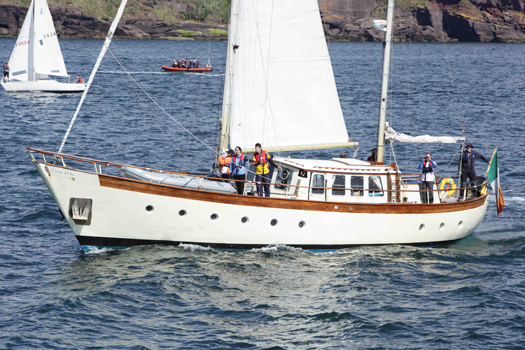
Ireland's only entry in the 2011 Tall Ships race from Waterford to Greenock Irish Whale and Dolphin Groups's research vessel Celtic Mist in the Tall Ships Parade of Sail off Dunmore East in Waterford. Photo: Shay Fennelly/Aquaphoto
The Tall Ships fleet was reviewed by Flag Officer Commanding Naval Service Commodore Mark Mellet and Sean Flood Sail Training Ireland (Board) and a Goodwill Ambassador for Sail Training International past the LE Aoife. Over 1200 young people, many who have never been to sea before, are onboard the 50 tall Ships sailing to Greenock.
On board Celtic Mist are Captain Fiacc Brolchain, Gary Davis, Eithne Griffith, Deirdre Slevin, Conor Ryan and trainees Siobhan Ardener (19) from Killarney, Co Kerry, and Keith Cleere (19) from New Ross, Co Wexford.
The race started slowly at 15.00hrs, five miles south of the Hook Lighthouse in 10 knots of wind and blue skies and headed for the Irish Sea to Scotland.
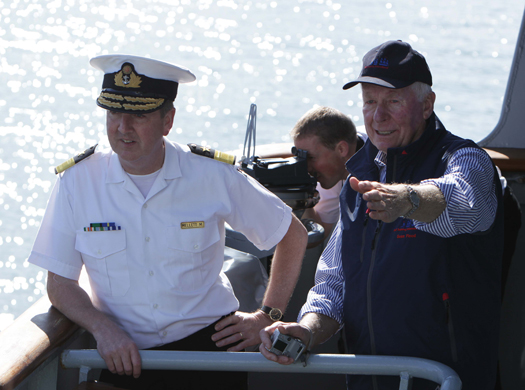
Flag Officer Commanding Naval Service, Commodore Mark Mellet (left) and Sean Flood Sail Training Ireland (Board) and a Goodwill Ambassador for Sail Training International on board LE Aoife reviewing the Tall Ships fleet as they passed off Dunmore East, County Waterford. Photo: Shay Fennelly/Aquaphoto
Martin Breen is June's Sailor of the Month
It's the fourth time that a Galway boat has won the Dingle race, giving Galway Bay SC unrivalled status, as the race has only been sailed a total of ten times. It was launched as a biennial event in 1993, and back in the day it was Donal Morrissey et al who started the process with two wins with the GK 34 Joggernaut. Then Eamon Conneely took both line honours and the handicap win with his first TP52 Patches, and now Martin Breen has done the business with his recently-acquired Reflex 38, which raced to Dingle under the moniker of Galway Harbour.
A former army captain, Breen's progress up the ladder of sailing achievement has been steady. He first made his mark with a successful Sigma 33, then there was more west coast sailing silverware taken with a Corby 33, and now he has the first Irish-based Reflex 38.
A hands-on skipper, for the race to Dingle he beefed up his usual ship's complement of family and friends with Galway's own Aodhan Fitzgerald, who in turn brought in Neil Spain and Johnny Murphy who had been on the Fitzgerald crew which won the round Ireland race.
Galway Harbour sailed a perfect first stage down the Irish Sea to lead everything on the water at the Tuskar Rock. On the long drag race to the Fastnet in a backing and strengthening southerly, only the Open 40 Pride of Dalkey-Fuji got ahead of the Galway boat, which managed to hang in despite blowing out a spinnaker and getting a tear in the mainsail.
By the time they reached the Fastnet, with the wind still veering they were already beating, and it was a slug into the Atlantic up to the next turn at the Skellig rock. The final stage into Dingle almost became a spinnaker reach, which would have been a problem as they'd blown out their reaching spinnaker on the south coast, but the wind stayed nor'west just long enough to get them into port and a superb win with a little bit of luck and a lot of talent
Tom Webb Sail Around Britain Challenge
Seventeen-year-old Tom Webb is poised to sail solo round Britain in his Hyde Sails-powered Beneteau First 211 'Danera'.
Tom believes sailing is a sport to be enjoyed by people of all abilities and to highlight the opportunities in sailing, particularly for disabled young people, on July 2 he will set off on his solo sail round Britain.
Tom explains: 'In doing the challenge I want to show my support for three fantastic charities: Phil Packer's British Inspiration Trust (BRIT), Even Keel and RYA Sailability at Langstone SC. Phil Packer is one of the most inspirational people I have met, who has an incredible mission with BRIT to create a
centre of inspiration for disabled young people in the Chichester area. Also, as a young person I want to challenge myself by drawing from the inspiration of the young disabled people I have met through the Even Keel sailing charity. They have challenges just in their daily lives, but also strive to set themselves new goals.'
The skipper
Tom Webb has been on and around boats all his life. 'My first dinghy was a bright yellow wooden Mirror dinghy,' he recalls. 'I then moved to Toppers and more recently I started racing a 420. Over the last couple of years I have been really lucky to have worked with the Even Keel Project and have taken part in racing events with them, including the fantastic Artemis Even Keel Challenge at Cowes in 2010.' This was where his solo sailing started: 'During this time I was becoming motivated to push my singlehanded ambitions, I began to explore the idea of sailing around Britain.
Through some luck, and the sale of the family Iroquois catamaran in 2009, "Danera" was bought as a yacht on which I could get experience of singlehanded keelboat sailing with a sail around Britain in the Summer of 2011 in mind.'
The boat and sails 'Danera' is a 21ft drop keel monohull. 'It's a fast boat that wouldn't be other people's first choice when sailing round Britain,' says Tom, 'Although hard work to keep going, she is rewarding to sail in all weather. She's topped out at 13 knots planing down a wave with the kite up - but I don't intend to push any where near as hard for the trip!' His new sails are from Hyde: ''The new fully battened main and genoa are a fantastic addition to the boat, they provide the power and
durability needed for long passages, but still give great responsive performance for racing around the cans.'
The Trip
Starting from Portsmouth on July 2, Tom will sail anti-clockwise stopping at 28 ports along the way. He will sail through the Caledonian canal, rather than round the top of Scotland as the trip needs to fit into his summer break between college and university. 'I will be sailing on average eight hours a day and hope to complete the trip in one and a half months.'
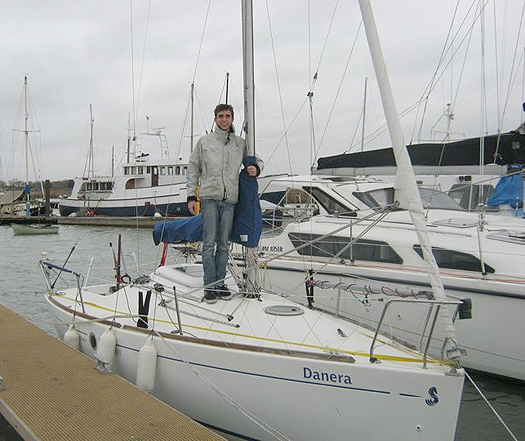
For more information on the project see www.tomwebbsailing.com
Ireland is on the entry list in six classes for the Weymouth and Portland International Sailing Regatta 2011, the London 2012 Olympic Test Event, that has been finalised today.
Ireland's leading hopes for a top result is in the Radial class where Annalise Murphy took bronze at the Sail for Gold regatta at the same venue. There's also high chances in the Star class with Peter O'Leary and David Burrows. Also sailing for Ireland is James Espey is in the Laser, Ross Hamilton in the Finn, Ger Owens and Scott Flannigan in the 470, Ryan Seaton and Matt McGovern in the 49er. A full entry list is available for download at the end of this post.
Sixty six nations have submitted the names of the 460 sailors who will test the conditions at Weymouth and Portland one year ahead of the London 2012 Olympic Sailing Competition.
For many of Member National Authorities there has been a selection headache with nations following game time rules where only one athlete per event is allowed.
In the Finn class Great Britain's Ben Ainslie was selected ahead of Giles Scott and Ed Wright, Spain's Marina Alabau received the nod ahead of Blanca Manchon and Anna Tunnicliffe (USA) lost out to Sally Barkow (USA).
The Women's Match Racers open the Weymouth and Portland International Regatta on 2 August 2011 with the start of their Round Robins. The Men's and Women's RS:X begin on 4 August followed by the Laser, Laser Radial and Men's and Women's 470 on 5 August before the Finn, 49er and Star sailors begin their competition on 6 August.
The London 2012 Olympic Games Sailing Competition will take place at the Weymouth and Portland Sailing Academy and Portland Marina, located in Dorset on the South Coast of England. Racing is scheduled to take place from 29 July to 11 August.At the 2012 Games sailing will introduce women's match racing for the first time. The racing format will be a single round-robin, quarter finals, semi-finals and then the finals. The nine fleet racing events will all sail an opening series before the top ten in each event contest a double-points Medal Race to decide the final positions. The Medal Races have a target time of approximately 30 minutes and will take place close to the shore at the Nothe to allow spectators ashore to get close up to the action.
'The Pressure's Off' says Annalise Murphy - Video
The pressure might be off Annalise Murphy at the 2011 Skandia Sail for Gold Regatta, but Afloat.ie's Sailor of the month for May, insists she isn't taking her foot off the pedal writes Ben Baker.
While hundreds of other boats fight tooth and nail to get their foot in the door for a London 2012 place at the Weymouth and Portland National Sailing Academy, Murphy can rest safe in the knowledge that she will be there as she is the only Irish representative in the Laser Radial class.
But despite ploughing a lonely furrow on England's south coast, the 21-year-old is making sure people sit up and take notice – sitting 15th overall with finishes of first, second and fourth to put a nightmare opening race placing of 33rd firmly behind her.
And with Sail for Gold taking place on the same waters as London 2012, Murphy is delighted to get some inside knowledge ahead of her biggest challenge in just over a year's time.
"This is the Irish trials but it's not so important for me because I'm the only one," said Murphy.
"It takes a lot of pressure of because, for most countries the national trials mean they are worrying about where the other people they are sailing against are in races.
"I don't have anything to worry about, I'm just going out and enjoying myself and not getting caught up in it.
"It's really important to get used to the venue and being here gives you an idea of what it is going to be like next year.
"It's pretty scary that they are happening so soon but hopefully I'll be as prepared as possible for it."
Sail Training Ireland to be Launched Next Week
Since the Department of Defence declared they no longer had an interest in sponsoring the continuation of the Asgard Sail Training Programme, and the subsequent decision of the Board of Asgard to wind up the Company, a working group supported by the ISA has worked to establish a National Sail Training Association.
Sail Training Ireland for Youth Development Ltd. has been established as a limited company recognised by Sail Training International as the representative body for Sail Training activities in Ireland.
An objectives of the organisation is to promote the development and Education of young Men and Women on the Island of Ireland in and through the Sail Training Experience regardless of Nationality, Culture, Religion, Gender or Social Background.
Dubin's Lord Mayor opened a Tall Ship and Youth Sail Training Workshop with an agenda to seek a solution to the current Irish Sail Training impasse caused by the loss of sailing's Asgard II and Lord Rank.
Over 70 delegtes including many of the 'top brass' of the Irish Tall Ship commuunity attended the meeting held at the offices of Dublin Port Company on Saturday (26th March). The meeting inlcuded members of Coiste an Asgard, port companies, education, tourism and other sailing interests.
The meeting was formally opened by Dublin Lord Mayor and Port Admiral, Gerry Breen who introduced the chairman Lord Glentoran and the Facilitator Michael Counahan.

From (Left to right) Seamus McLoughlin, Dublin Port Head of Operations, Enda Connellan, Chairman Tall Ships Dublin 2012, Des Whelan, Chair Tall Ships Waterford 2011, Lord Glentoran (Robin Dixon) Chair Tall Ships Belfast 1992, Dr. Gerard O'Hare, Chair Tall Ships Belfast 2009, Ted Crosbie, Tall Ships Cork and Enda O'Coineen, LetsdoitGlobal.
Des Whelan gave an excellent talk and presentation on Tall Ships Waterford which was followed by a discussion on the massive economic benefits of bringing Tall Ships Festivals To Dublin, Cork and Belfast. Chairman of Tall Ships Dublin 2012 Enda Connellan and Ted Crosbie of Tall Ships Cork and Dr. Gerard O' Hare of Tall Ships Belfast discussed the incredible success stories from their respective ports festivals.
Several presentations and discussions followed regarding the role of Tall Ships in Sail Training, the connection between a vessel for Ireland and running events here. The question of who are the stakeholders and how can benefits be quantified was also discussed.
The meeting was hosted by Dublin Port Company who provided a warm welcome, excellent facilities, refreshments and a wonderful lunch with senior management attending to everyone's needs.
After lunch there were further discussions on what is the most suitable vessel, who should run the organisation and what would work best for Ireland.
Jimmy Tyrrell gave a short, eloquent and emotional account of Asgard II and the realisation of his father's dream which was fulfilled beyond all expectation by that legendary vessel and those who were privileged to sail on her. He affirmed his own belief that the way forward was with an All-Ireland Tall Ship and even suggested that she be called Spirit of Ireland. There were other suggestions for a name inlcuding 'Ireland's Call'.
A view was also expressed that politics and religion have no place in Sail Trail Training and the future lay in an All-Ireland Commercial/Charitable Trust Venture.
The prohibitive nature of current legislation and the total lack of awareness of the maritime sector by the Government was mentioned several times.
Ocean Youth Club NI provided four young sail trainees to address the gathering on the benefits of Sail Training from their perspective and representatives from education, tourism Tall Ships International and "Association Of Tall Ships Organisations" also contributed.
The general consensus was the need to develop and promote, as a matter of urgency, a plan for a Tall Ship For Ireland linking Youth, Maritime Education, Business and Tourism.
Another workshop will be held in Belfast in April and the collective input of both meetings will be considered going forward.
A Tall Order for Ireland? HERE
Regular updates on Irish Tall Ship sailing news HERE
More on Asgard II HERE
Simon Coveney Appointed Marine Minister
Cork sailor Simon Coveney (38) has been appointed as Minister of Agriculture, Food and Marine in the new cabinet of the Fine Gael/Labour Government formed yesterday.
The announcement has been welcomed by various marine interests pleased to see Marine back at the cabinet for the first time since the Department was dismantled by Fianna Fail's Bertie Ahern in 2002.

Marine Minister Simon Coveney TD
The appointment means Taoiseach Enda Kenny has kept good an election promise to reinstate the Marine department. A decade of lost opportunties has meant the sector has suffered through lack of infrastructure and coastline planning.

Simon Coveney at the helm of his yacht Wavetrain. Photo: Bob Bateman
"Simon is someone who understands the Sea as a sailor himself but also in his work as an MEP where he was involved in a number of major European maritime projects. This is a great opportuinty for the Marine. We look forward to working with him to develop this untapped resource." said David O'Brien of the Irish Marine Federation.
Simon was first elected to the Dáil in 1998 as one of Fine Gael's youngest TD's aged 26. He replaced his father Hugh Coveney TD following his untimely death.
Simon follows his father in to the post of Marine Minister. Hugh held the post in 1994.
Simon holds a B.Sc. in Agriculture and Land Management from Royal Agriculture College, Gloucestershire. He was also educated at Clongowes Wood College, County Kildare; University College Cork, and Gurteen Agricultural College, County Tipperary.
A keen fan of all competitive sport he has worked as a sailing instructor at his club Royal Cork Yacht Club in Crosshaven and been involved in many sailing regattas.
In 1997/8 he led the "Sail Chernobyl Project" which involved sailing a boat 30,000 miles around the world and raising €650,000 for charity.
In 2006 he contributed to RTE's series The Harbour and in a memorable quote, the Cork TD and former MEP said: "When somebody asks me the question, what's the one thing that's special about Cork?, I'd say the harbour."





























